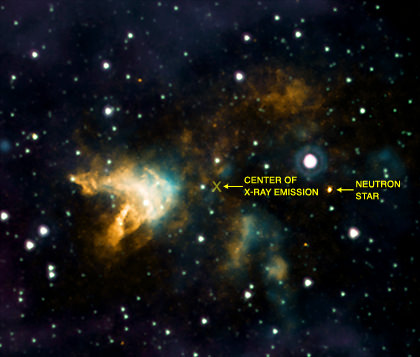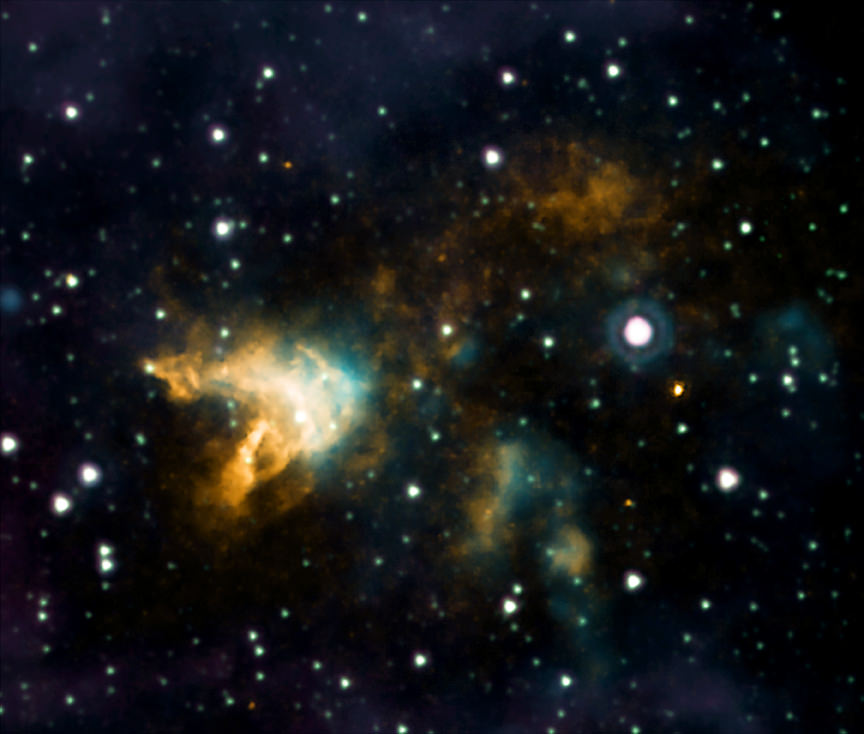[/caption]
Located some 14,700 light years from the Earth toward the center of our galaxy, a newly photographed supernova remnant cataloged as G350.1+0.3 is making astronomers scratch their heads. The star which created this unusual visage is suspected to have blown its top some 600 to 1,200 years ago. Although it would have been as bright as the event which created the “Crab”, chances are no one saw it due to the massive amounts of gas and dust at the Milky Way’s heart. Now NASA’s Chandra X-ray Observatory and the ESA’s XMM-Newton telescope has drawn back the curtain and we’re able to marvel at what happens when a supernova imparts a powerful X-ray “kick” to a neutron star!

As you look at the photo, you’ll notice one thing in particular… the irregular shape. The Chandra data in this image appears as gold while the infrared data from NASA’s Spitzer Space Telescope is colored light blue. According to the research team, this unusual configuration may have been caused by the stellar debris field imparting itself into the surrounding cold molecular gas.
These results appeared in the April 10, 2011 issue of The Astrophysical Journal. The scientists on this paper were Igor Lovchinsky and Patrick Slane (Harvard-Smithsonian Center for Astrophysics), Bryan Gaensler (University of Sydney, Australia), Jack Hughes (Rutgers University), Stephen Ng (McGill University), Jasmina Lazendic (Monash University Clayton, Australia), Joseph Gelfand (New York University, Abu Dhabi), and Crystal Brogan (National Radio Astronomy Observatory).
Original Story Source: NASA Chandra News Release.

